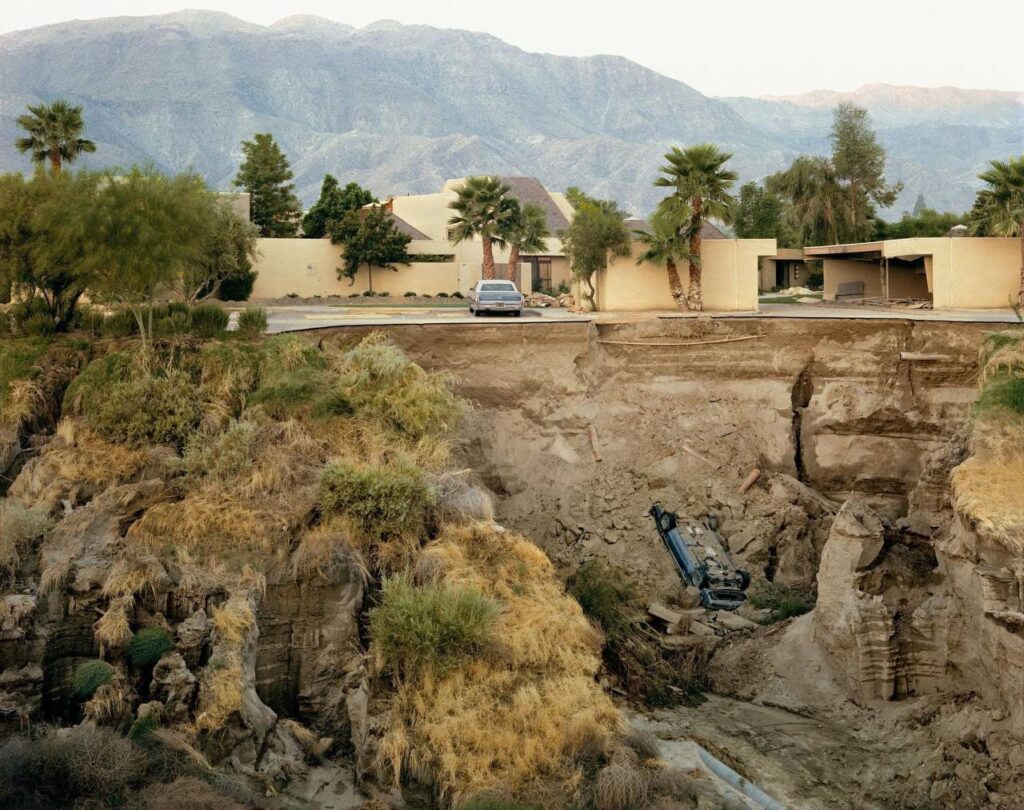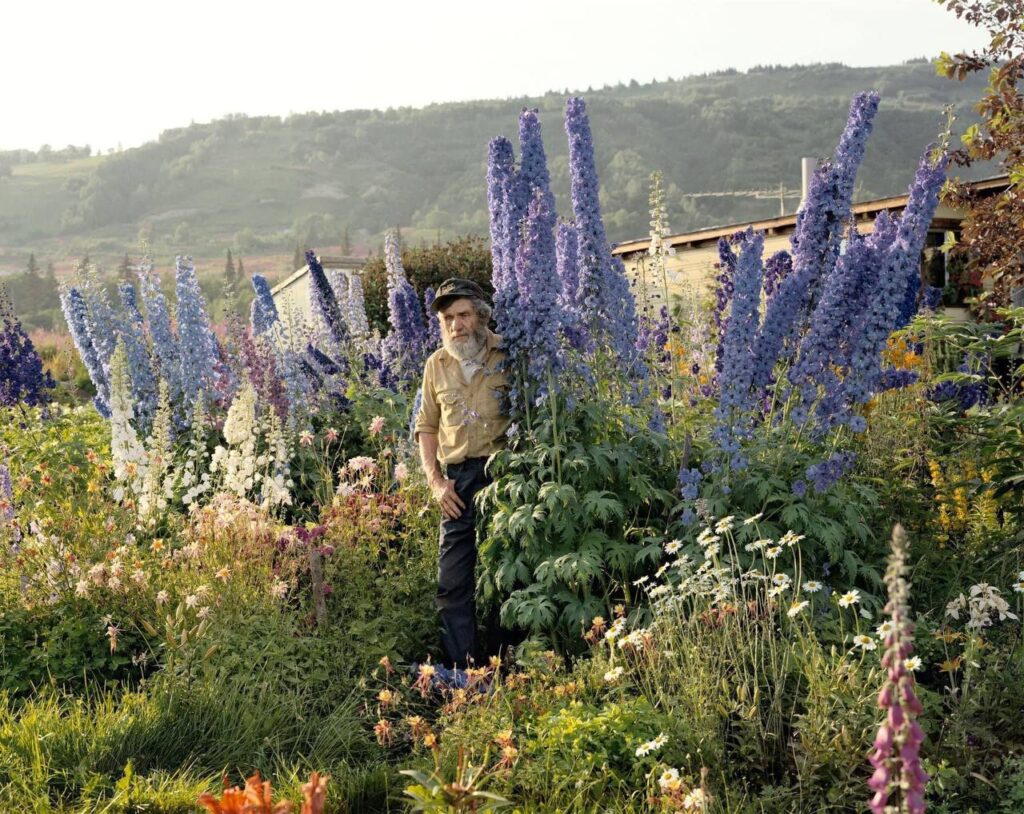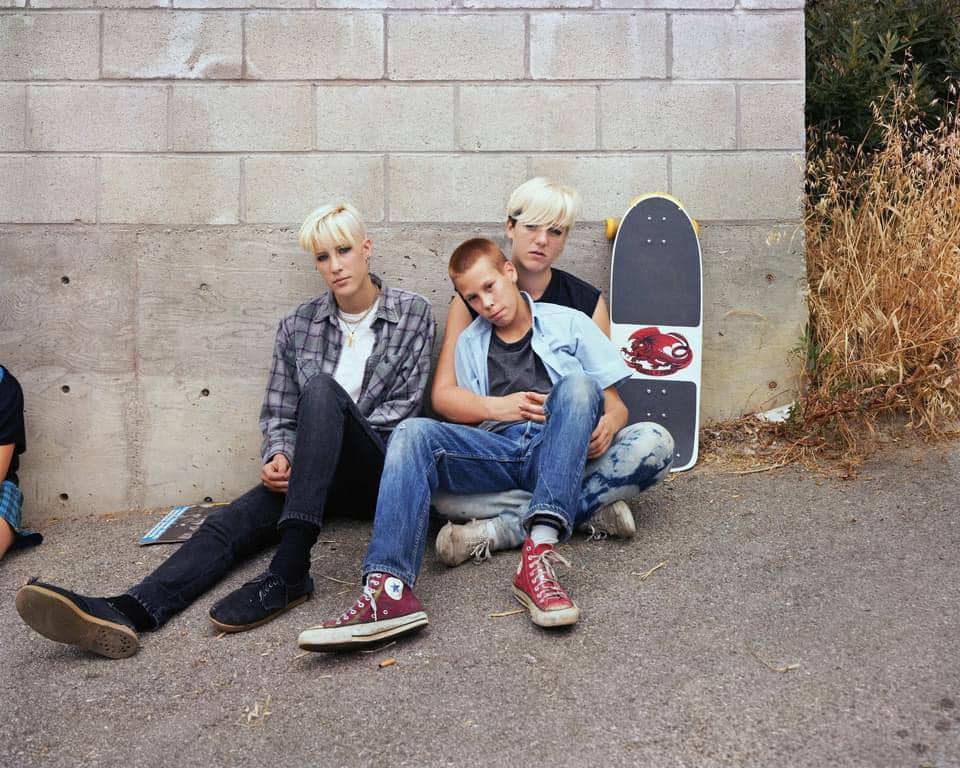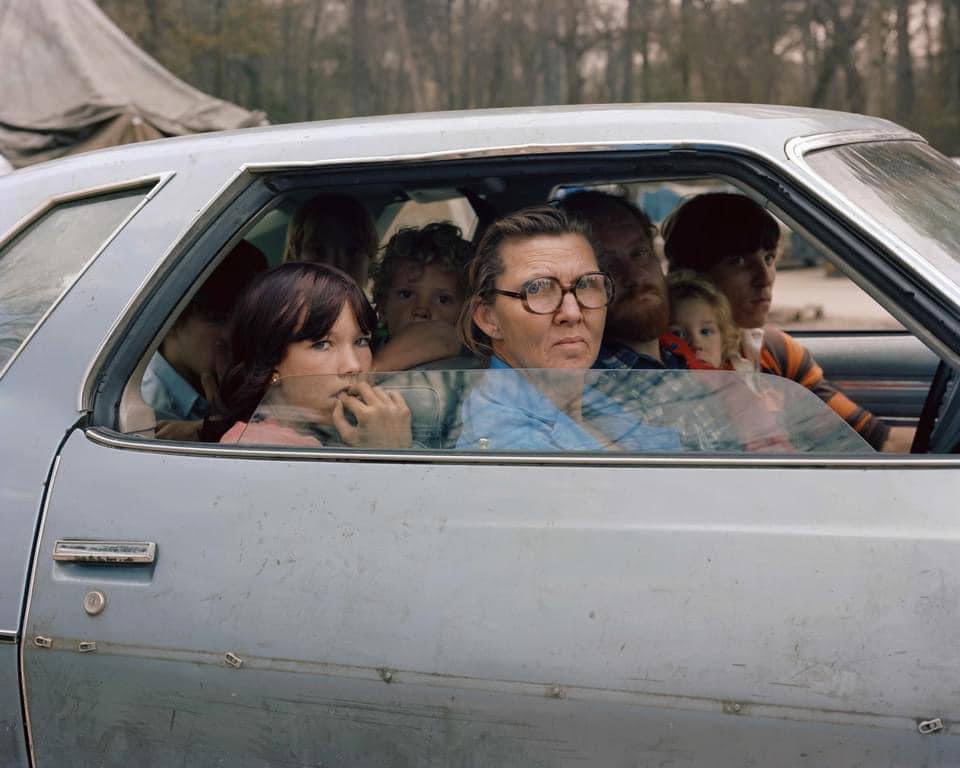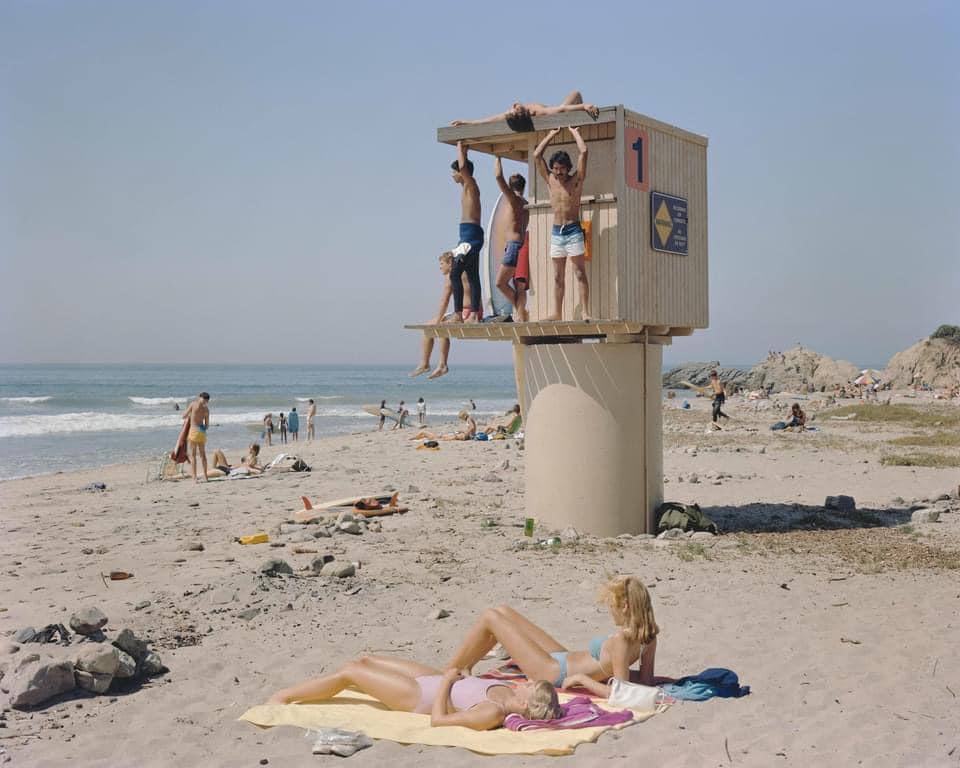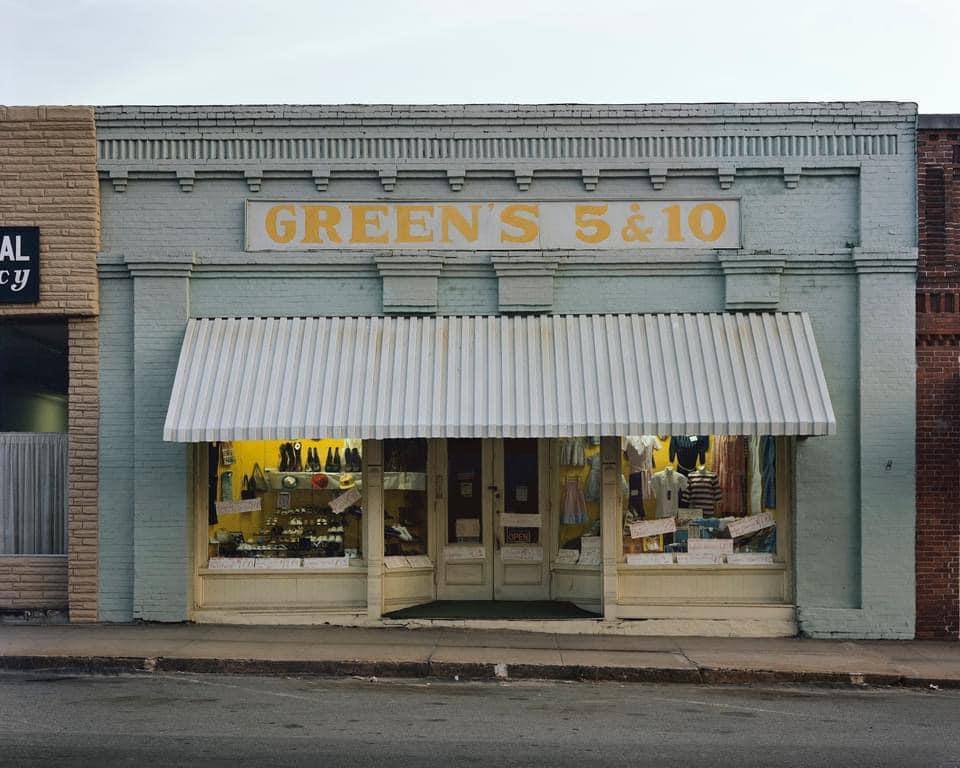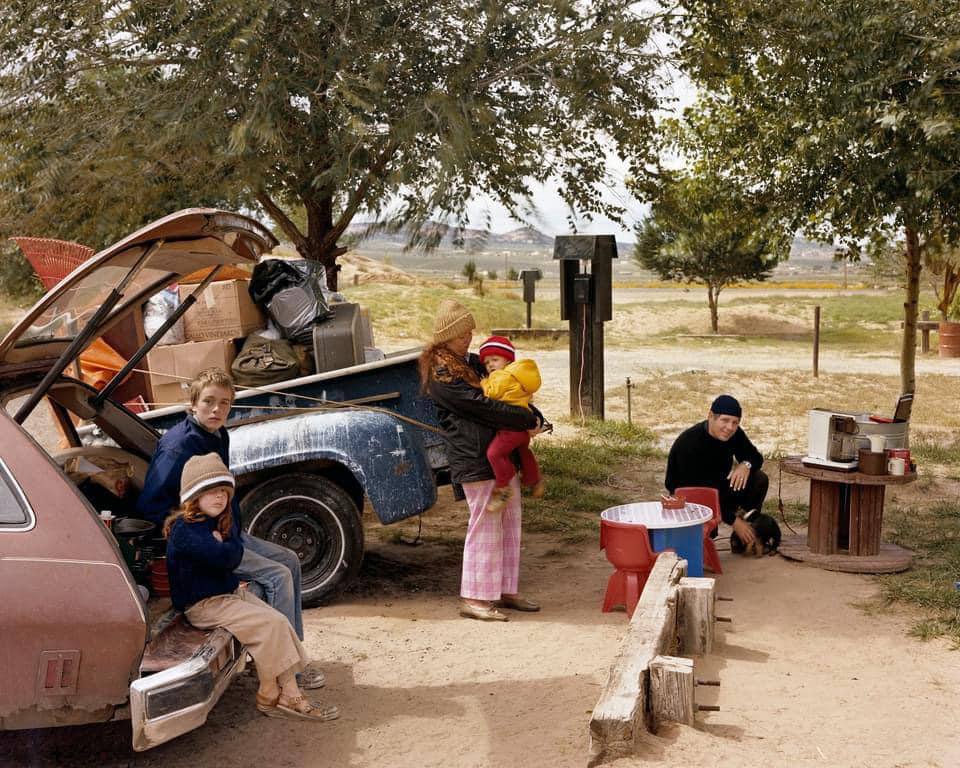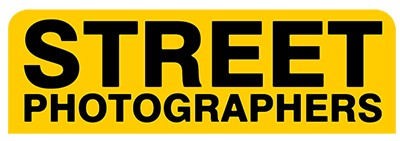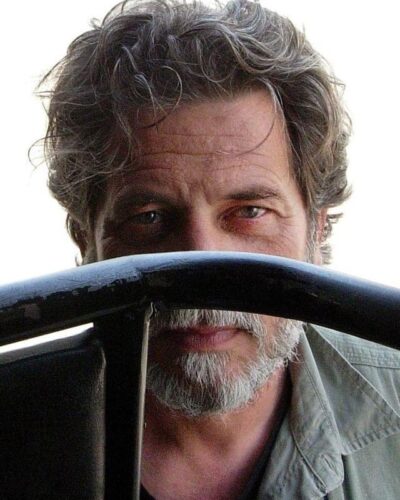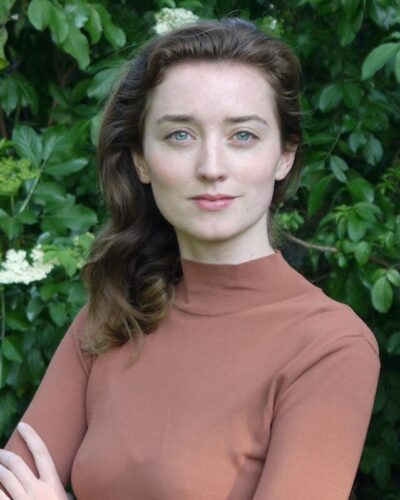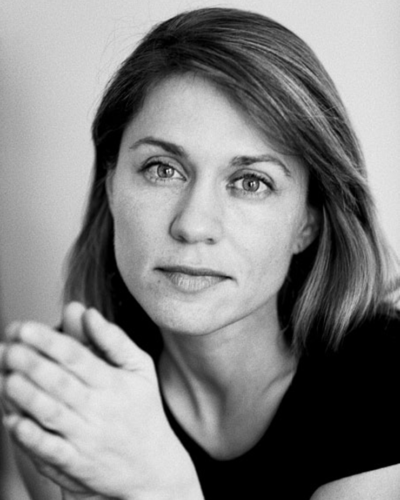Joel Sternfeld
“American Prospects”
In 1971, the 27-year-old Joel Sternfeld left his native New York to embark on the first of many trips he would later make to America with the aim of documenting his homeland while remaining fascinated by the people and landscapes that were intertwined to form such a complex society.
Investigating the intricate relationship between the earth and its inhabitants, Sternfeld sought to discover what harmony still resided in a country that was rapidly becoming “uniform, technological and unsettling,” as he will write later. In 1977 he had developed a sophisticated use of color that integrated with the narrative strategies of his photographs.
In 1978, thanks to a scholarship, he started working on a large-scale project, which would become American Prospects.
Borrowing thought from critic Lewis Mumford, Sternfeld strongly felt that each historical period had a distinctive color combination, and turned to delicate, non-primary colors to represent the pseudo-sophistication of late 1970s and early 1980s America.
He investigated the man’s interventions in the landscape and the traces he left behind. He looked at the areas in which society had suppressed nature, both through agriculture, industry, and with the increasingly creeping suburbanization.
As a reporter of social issues in America, Sternfeld’s work continues the tradition established in the 1930s by Walker Evans and continued by Robert Frank about twenty years later. He widened the trajectory of the vehicle, not only with his brilliant and clever use of color, but also by photographing scenes rich in narrative. He used a formal invention like positioning himself high and away from his scenes, which allowed him to stop the action with an 8×10 camera. So he was able to photograph great, dense, meaningful shows. His intentional step back invites the spectator to do the same. Small, intricate details are revealed only after an active period of “observation”. The resulting images thus make it easier to expand the narrative possibilities of photography.
